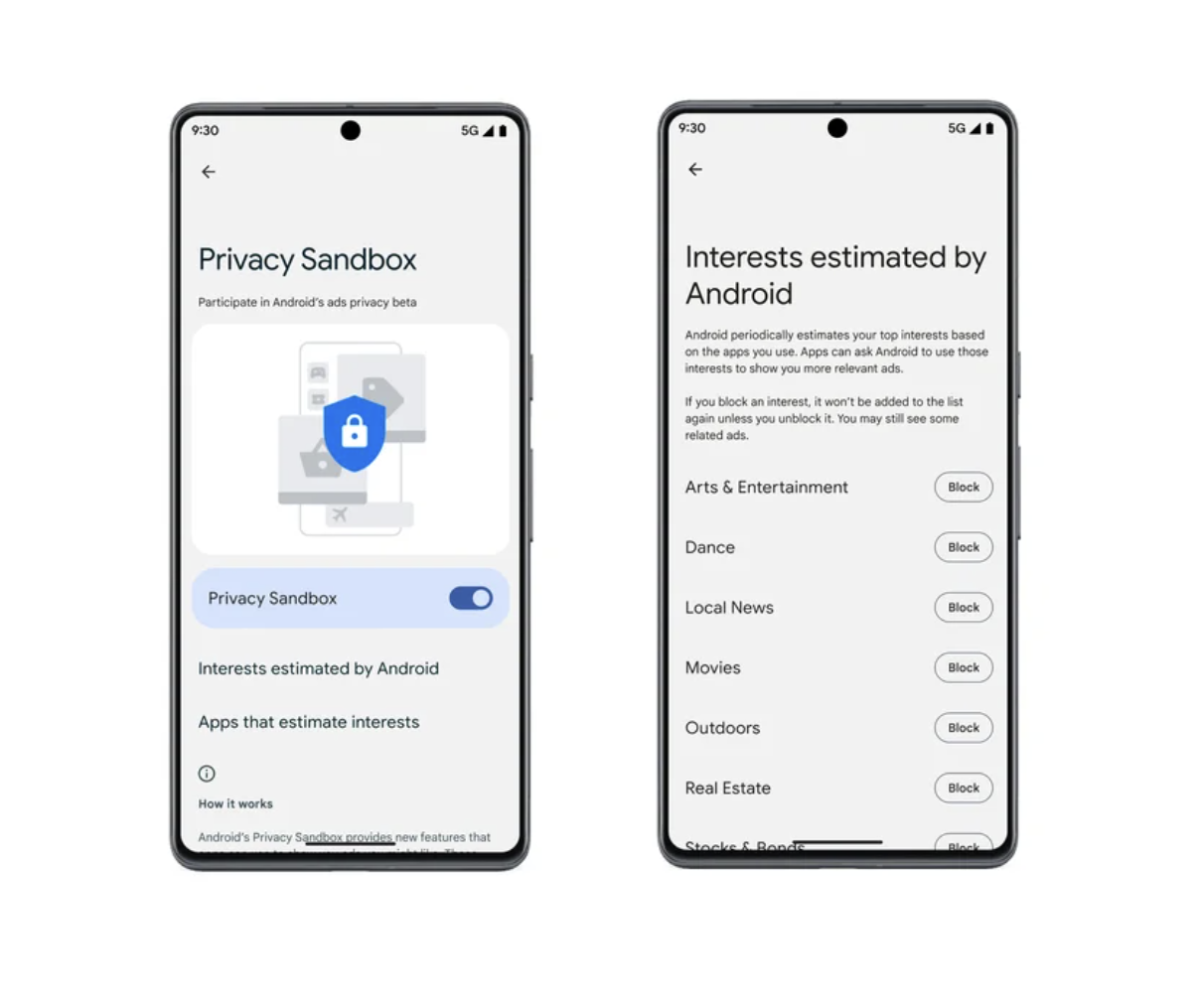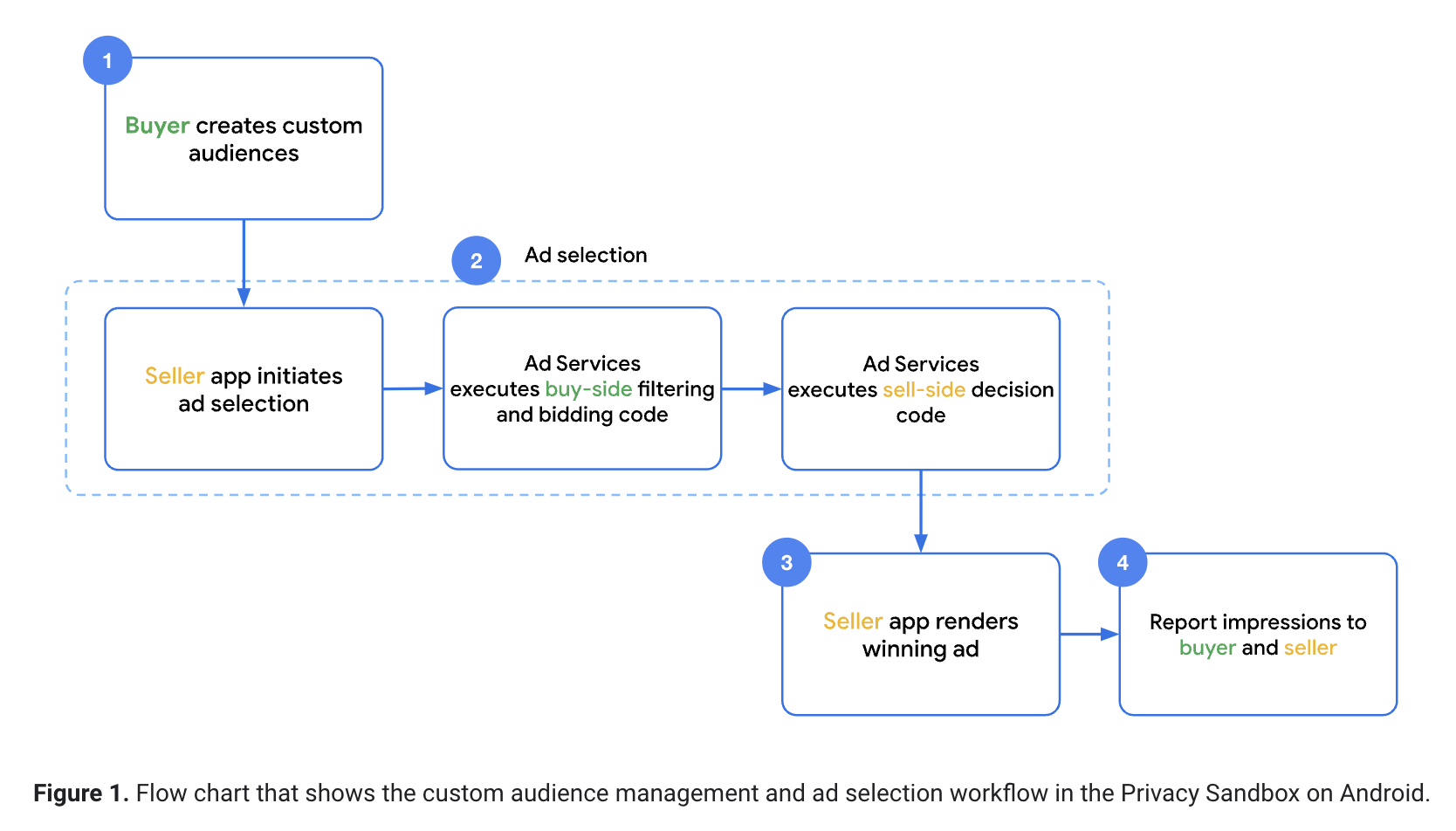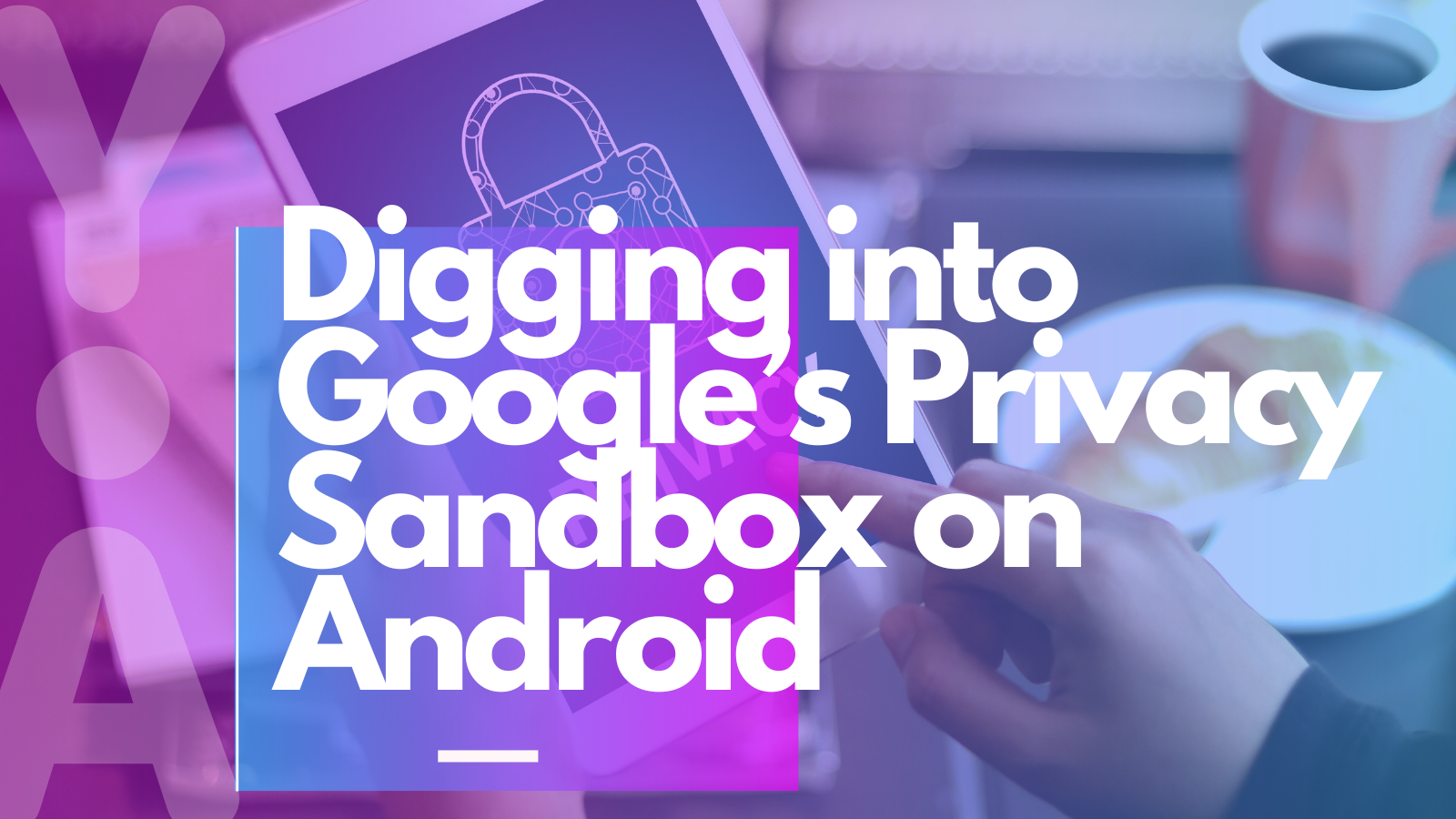In February 2022, Google announced their plans to enhance user privacy on Android with an initiative called the Privacy Sandbox. Many app marketers have questions about Android’s plans and how it affects the app market as a whole. Even though many marketers are used to hearing the term “Google Sandbox” throughout the years, they may not understand exactly what it is and why it matters when it comes to app marketing on Android in 2023.
In this blog, we outline what Google’s Privacy Sandbox on Android is and what changes app marketers will be faced with when it comes to app retargeting and engagement.
What is the Google Privacy Sandbox?
The Google Privacy Sandbox is an initiative by Google to develop a more privacy-focused and secure mobile experience. It aims to address some of the privacy concerns associated with online advertising and user tracking while still enabling personalized and relevant advertisements. The Privacy Sandbox’s main goal is to create technologies that protect user digital privacy while giving developers tools to build thriving digital experiences. It reduces cross-app tracking while helping to keep mobile content and services free for all.
The Privacy Sandbox includes a set of privacy-preserving technologies and APIs (Application Programming Interfaces) designed to strike a balance between user privacy and the needs of advertisers and publishers. Privacy Sandbox on Android will introduce new technology that operates without cross-app identifiers, including Google Advertising IDs (GAIDS). This helps apps remain free through ads while user data stays protected.
What Does this Mean for App Retargeting?
Deprecation of GAID
The deprecation of the Google Advertising ID (GAID) is a major change that comes with the roll out of Google’s Privacy Sandbox. Currently, GAID is used for attribution, audience management and 3rd party data sharing. In terms of attribution, GAID helps marketers measure the effectiveness of their campaigns and understand their user journey. This identifier also helps marketers personalize their remarketing campaigns and enables ad networks to build persona graphs to assign the best ads per persona.
GAID deprecation will impact app marketers and their current measurement and remarketing efforts. However, there are many tools marketers can use in order to prepare for this change.
Google’s Proposed Solutions to the Privacy Sandbox
Despite these changes around user privacy, Google is determined to work with the industry to develop the Privacy Sandbox on Android in a way that works for everyone. This includes working with app developers, advertisers, and measurement providers. Rather than approaching the privacy update with the same sense of urgency as Apple, Google chose to offer marketers extra time to get ready. Here are a few ways Google suggests app marketers adapt to these privacy changes.
Topics
Topics is a proposal for a new way to target ads based on users' interests for user acquisition campaigns. These are recognizable categories that are inferred based on the apps a user frequents. Both apps and advertising platforms can use Topics to decide what ads may be relevant to a user. Topics are selected entirely on the user's device, so the information about the apps used isn’t shared with external parties. Users will be able to see and control their Topics in their device settings. Topics are generated on-device and are refreshed every few weeks.
 Source: Google
Source: Google
Protected Audience API (formerly, FLEDGE)
Protected Audience API is a proposal for a new way to retarget users without compromising on user privacy. Today, remarketing leans heavily on the use of GAID, as marketers can define audiences by user preferences, interests, and app use to generate a list of GAIDs to activate a remarketing campaign. In light of GAID’s upcoming deprecation, Google introduced Protected Audience API, an on-device (not sent to any servers), privacy-centric audience management and advertising solution.
This new Protected Audience API encompasses the following APIs for ad tech platforms and advertisers to support common interaction-based use cases in ways that limit the sharing of both identifiers across apps and a user's app interaction information with third-parties:
- Custom Audience API: This is centered on the "custom audience" abstraction, which represents an advertiser-designated audience with common intentions. Audience information is stored on-device and can be associated with relevant candidate ads for the audience and arbitrary metadata, such as bidding signals. The information can be used to inform advertiser bids, ad filtering, and rendering.
- Ad Selection API: This provides a framework that orchestrates ad tech platforms' workflows that leverage on-device signals to determine a "winning" ad by considering candidate ads stored locally, and performing additional processing on candidate ads that an ad tech platform returns to the device.

Source: Android
Attribution Reporting
The Attribution Reporting APIs aim to replace the current methods of measurement with solutions that don’t rely on user-level tracking mechanisms, so that users' information is better protected. This will be the key way to measure and attribute campaign performance for devices where the GAID is not accessible.
Within this framework, two report types will be available to app marketers: event reports and aggregated reports. These are both likely to become important components in marketers’ Android advertising strategies.
Event reports are similar in concept to SKAN’s postbacks, providing upper-funnel data (campaign, sub-campaign, creative, click ID, etc.) to associate a click with a small amount of conversion data. Event-level reports allow ad networks to get accurate signals for the ad shown. However, to protect end-user privacy, reports are delayed by a minimum of one day for view through attribution and two days for click through attribution and a maximum of three postbacks are attributed per source. As this solution currently stands, event-level reports are most impactful for ad networks to use for optimization, and are less insightful for marketers.
Aggregated reports provide granular trigger (event) data more quickly in aggregated form. These reports offer richer insights to marketers, as they may include detailed campaign dimensions, such as the campaign name, date, geo, and creatives. The details of the campaign dimensions included in the aggregated reports are up to the network and MMP and advertiser to define. The postbacks that compose the aggregated reports are sent the same day. The aggregated reports provide install and post-install LTV, giving marketers actionable insights for campaign learnings.
YouAppi and The Privacy Sandbox
YouAppi has been preparing for the Privacy Sandbox on Android for quite some time. In the new era of privacy changes and depreciation of identifiers, our team is constantly building other ways to re-engage and retarget valuable users for our clients. Here are a few ways that YouAppi will continue to find success regardless of privacy changes on Android:
- Creating and maintaining audiences through the MMPs that interface on-device the Custom Audience API
- Providing the metadata of campaigns (e.g., URLs for creatives) for in-device rendering after successful bidding
- Providing the bidding logic executed on-device, using signals from the publisher and the advertiser
- Providing the filtering rules and logic
- Receiving the sandbox’s reports for control and optimization of the campaigns
Have questions when it comes to this new privacy rollout? Let’s get in touch!
Takeaways of Digging into Google’s Privacy Sandbox on Android
The Google Privacy Sandbox is an initiative by Google to develop a more privacy-focused and secure web browsing experience. It aims to address some of the privacy concerns associated with online advertising and user tracking while still enabling personalized and relevant advertisements. Here are some of the ways in which Google suggests app marketers adapt to these privacy changes:
- Topics: This initiative is a new way to target ads based on users' interests for user acquisition campaigns. Both apps and advertising platforms can use Topics to decide what ads may be relevant to a user.
- Protected Audience API (formerly, FLEDGE): Protected Audience API is a proposal for a new way to retarget users without compromising on user privacy. In light of GAID’s upcoming deprecation, Google introduced Protected Audience API. This is an on-device (not sent to any servers), privacy-centric audience management and advertising solution.
- Attribution Reporting: The Attribution Reporting APIs aim to replace the current methods of measurement with solutions that don’t rely on user-level tracking mechanisms, so that users' information is better protected. This will be the key way to measure and attribute campaign performance for devices where the GAID is not accessible.
Is your team ready for the Android Privacy Sandbox? Strategize with one of our mobile growth experts today to find out how the Privacy Sandbox will affect your app!

